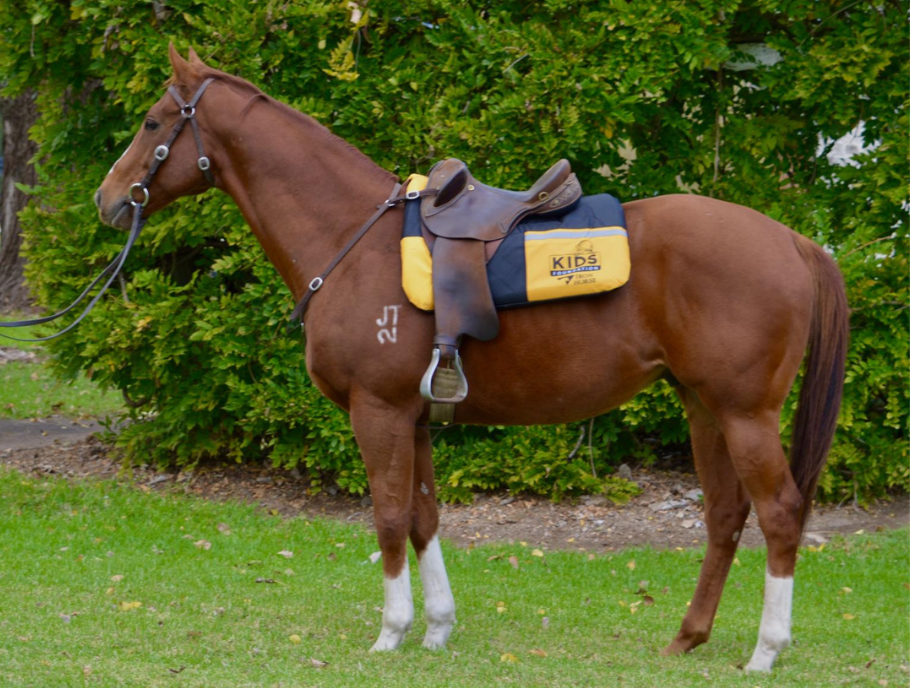
Monitoring A Horse’s Body Condition
By Dr Carly Garling
The most correct method of assessing your horse’s body condition (closely related to the amount of fat your horse is carrying) is through Body Condition Scoring (BCS). A horse’s body condition score is the estimation of the amount and distribution of fat in the horse. Please note this is different to the horse’s weight.
The Australian Body Condition Scoring (BCS) is a numerical value given between 0 -5. The range varies from Score 0, describing horses in very poor condition, to Score 5, describing overweight horses. Horses are accurately condition scored by combining visual assessment with feeling the horse for fat cover.
BCS involves visual assessment and palpation of your horse’s neck and withers region, assessment of the whole topline, behind the shoulder, over the ribs, the pelvis/rump, and the tail head. Regular BCS by yourself will allow you to determine whether your horse has lost or gained condition and whether changes need to be made to your horse’s diet.
Many horse owners believe it is better to have a fat horse than a thin horse, when it is most healthy for your horse to be a bodyweight in the middle (BCS 3/5). Problems which may develop if your horse is:
Overweight:
- Horses that have a BCS of 4-5/5
- Will be predisposed to conditions such as equine metabolic syndrome (which will lead to laminitis), increased pressure and strain on body systems, joints and soft tissue structures which predispose them to injury and disease.
Underweight:
- Horses that have a BCS of 0-1.5/5 have no fat reserves, if energy is needed they will break down protein (from muscle) for energy requirements.
- If a horse is not adequately fed, and all fat stores have been used, your horse’s condition score may fall to the point where its health and welfare are compromised.
- If your horse is underweight you should contact your veterinarian for health/dental assessment and a feeding plan to increase weight gain.
How to perform BCS
First stand to the side of your horse with enough distance to visually assess the whole horse, and then stand behind, focusing on the roundness of your horse’s rump. Next, use your hands to feel and assess the amount of fat between the bone and skin.
BCS by region
- Neck: thin horses will have a narrow and thin-looking neck. As the horse fattens, the neck blends more smoothly into the body and will have a “crest”.
- Shoulder: thin horses will have a prominent boney appearance of the shoulder region. As horses increase in condition, you will not be able to see boney prominences and there will be fat deposits behind the shoulder.
- Ribs: the ribs of horses with lower body condition can be more easily seen and felt. As BCS increases to 3/5, ribs can no longer be seen and in overweight horses, you will not be able to palpate the ribs.
- Rump: a horse’s rump should be a round shape when viewed from behind. The pelvis will sink in horses with poor body condition, and gradually round as they increase in body condition.
- Tail head: the tail head is prominent in horses of poor body condition. As the horse’s body condition improves, the tail head will blend in. In overweight horses, fat deposits will be seen either side of the tail head.
- Top line: horses in poor body condition will have a ridge down their back from withers to tail. An overweight horse will have a gutter along the backbone.
Your horse may fall between scores, and therefore if he fitted some criteria of 3, and some criteria of score 4, you could call him a BCS 3.5/5.

Latest Horses
Team Thoroughbred Newsletter
Subscribe to Redzel’s Roundup, the Team Thoroughbred e-newsletter, and be the first to know about our special events and activities, receive important information from our equine welfare veterinarians, read good news stories, go into the draw for Team Thoroughbred giveaways and most importantly be part of a passionate community of Thoroughbred lovers!


